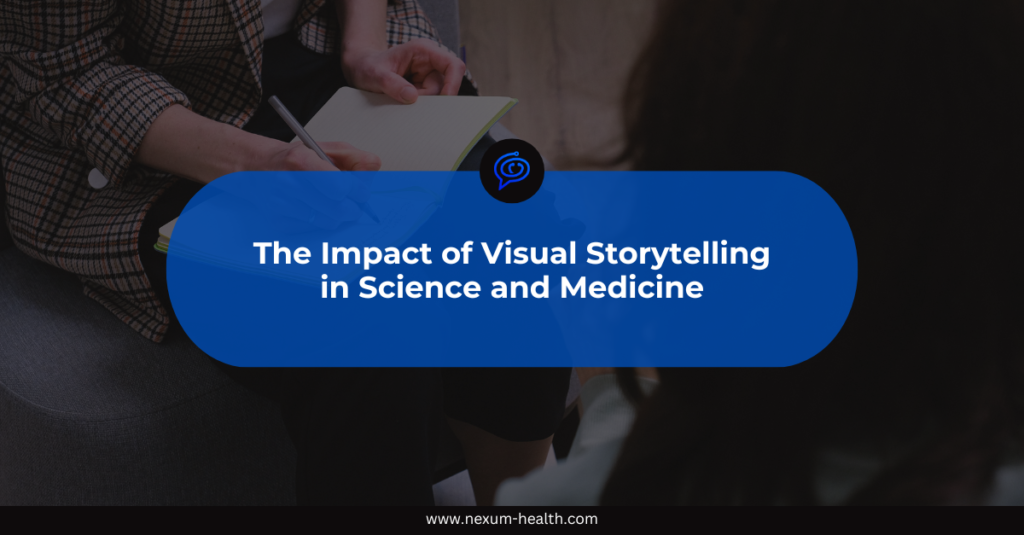In an era inundated with a relentless flow of information, navigating the vast expanse of data has become a formidable challenge. Amidst this sea of complexity, the ability to distil concepts into easily comprehensible forms has risen to the forefront of communication. Here, visuals emerge as invaluable allies, employing the power to transform dense data into accessible narratives.
Now where is the need for clarity more pronounced than in science and medicine. In an environment where trust in information is increasingly precarious and misinformation runs rampant, visuals stand as a foundation of understanding. They serve as navigational aids in the sea of information overload, illuminating pathways to comprehension and fostering informed decision-making.
In scientific research and medical breakthroughs, visualisation plays a pivotal role in bridging the gap between experts and the public. By translating complex data into visual representations, they offer a common language that transcends disciplinary boundaries. Whether elucidating the intricacies of molecular biology or demystifying medical procedures, visuals serve as universal connectors, facilitating dialogue and fostering mutual understanding.
In an age where scepticism and uncertainty abound, visuals serve as vital tools for cultivating trust and transparency. By rendering data in a visually compelling manner, they engender a sense of clarity and credibility, authorising individuals to make informed decisions.
The power of visuals
Visuals encompass a diverse array of mediums, from medical illustrations to dynamic animated infographics. They serve as vehicles for translating abstract data into tangible insights, offering a gateway to understanding in a world saturated with information. Particularly for audiences unversed in the technical jargon, visual representations provide a clear and concise means of comprehension.
In science and medicine, where concepts can be inherently complex and terminology daunting, visuals serve as invaluable aids for both experts and laypersons alike. They transcend the limitations of language, offering a universal language through which insights can be conveyed and understood. Whether elucidating the molecular intricacies of cellular processes or depicting the interplay of variables in epidemiological trends, visuals allow individuals to grasp complex concepts with ease.
Furthermore, visuals possess a unique ability to engage the viewer on multiple sensory levels, harnessing the power of sight to evoke understanding and insight. By leveraging visual cues such as colour, shape, and spatial arrangement, they create cognitive connections that facilitate rapid comprehension and retention. In a world where attention spans are increasingly fleeting, visuals offer a respite from information overload, providing a visually stimulating medium through which knowledge can be absorbed effortlessly.
Misinformation Maze
Distrust and misinterpretation loom large, perpetuated by the rampant spread of misinformation and the erosion of trust in traditional news outlets. The repercussions of this phenomenon are far-reaching, underscored by crises such as vaccine hesitancy that threaten public health and safety. In such a milieu, the ability to discern verifiable scientific evidence amidst the discord of conflicting narratives becomes not just advantageous, but imperative.
The proliferation of misinformation poses a formidable obstacle to effective science and healthcare communication. Falsehoods and half-truths abound, disseminated through various channels ranging from social media platforms to dubious websites. This deluge of misinformation not only undermines public trust in established scientific principles but also perpetuates dangerous misconceptions that can have dire consequences for individual and community health.
Additionally, the erosion of confidence in traditional news sources further compounds the challenge of distinguishing fact from fiction. In an era where sensationalism often supersedes accuracy, discerning credible sources of information becomes increasingly elusive. As a result, individuals are left vulnerable to manipulation by unscrupulous actors peddling misinformation for personal or ideological gain.
The ramifications of this information crisis are palpable, manifesting in phenomena such as vaccine hesitancy that threaten to undermine public health initiatives. In the face of such challenges, the imperative to safeguard the integrity of scientific communication has never been more pressing. Warranting that accurate, evidence-based information is accessible and effectively communicated to the public is essential for mitigating the spread of misinformation and fostering informed decision-making.
In this milieu, the role of trusted scientific authorities and reputable news outlets cannot be overstated. By upholding rigorous standards of evidence and transparency, these entities serve as barricades against the tide of misinformation, providing an inspiration of clarity amidst the noise. Equally important is the cultivation of critical thinking skills among the general public, authorising individuals to evaluate information critically and discern fact from fiction.
The Role of Storytelling
At the core of effective communication lies the art of storytelling. It’s a timeless practice that transcends cultures and ages, narratives that captivate the imagination and illuminate the human experience. Whether unravelling the mysteries of the cosmos or elucidating ground breaking medical discoveries, storytelling serves as a powerful conduit for conveying complex concepts with clarity and resonance.
Studies across disciplines corroborate the profound impact of storytelling on comprehension and retention. Through narrative arcs and character development, stories engage the audience on an emotional level, forging connections that transcend mere facts and figures. In science communication, this emotional resonance is particularly potent, as it enables individuals to relate to abstract concepts in a meaningful way.
Additionally, storytelling has been shown to enhance long-term retention of information. By embedding key concepts within memorable narratives, individuals are more likely to retain and recall them over time. This phenomenon is rooted in the brain’s propensity to process information in the form of stories, leveraging the power of narrative structure to organise and store knowledge effectively.
Catering to the audience
Catering to the audience is not merely a suggestion but a fundamental principle of effective communication. When it comes to visuals, this principle takes on heightened significance, as the success of a visualisation hinges upon its ability to resonate with its intended audience. Whether the audience comprises novices taking their first steps into a complex field or professionals seeking deeper insights, the design and presentation of visuals must be tailored to meet their unique needs and preferences.
For novices entering unfamiliar territory, visuals serve as introductory guides, gently ushering them into the intricacies of a subject matter. In these instances, simplicity reigns supreme. Complex concepts must be distilled into bite-sized nuggets of information, presented in a manner that is approachable and easy to digest. Clarity is paramount, with visuals serving as signposts along the path to understanding. By avoiding jargon and technical terminology, novices are permitted to engage with the material without feeling overwhelmed or intimidated.
On the other end of the spectrum, professionals demand a deeper level of sophistication and detail. Visuals tailored to this audience must offer nuanced insights and advanced analytical capabilities. Data visualisation tools that allow for interactive exploration and manipulation are particularly well-suited to the needs of professionals, enabling them to delve into complex datasets and uncover hidden patterns and trends. Additionally, visuals for professionals may incorporate advanced statistical techniques and modelling approaches, providing deeper insights into the underlying mechanisms at play.
Considerations such as familiarity with data and viewing context also play a pivotal role in shaping the design and presentation of visuals. For audiences with limited exposure to data analysis or visualisation techniques, explanatory elements such as tooltips and annotations can provide valuable context and guidance. Similarly, the viewing context – whether the visualisation will be presented in a formal setting such as a conference or in a more casual setting such as a social media feed – will influence the design choices and level of detail included in the visualisation.
Time constraints represent another factor that must be taken into account when designing visuals. In today’s fast-paced world, attention spans are fleeting, and individuals may only have a limited amount of time to engage with a visual. As such, visuals must be designed with brevity and clarity in mind, delivering key insights quickly and efficiently. Attention-grabbing visuals and succinct summaries can help capture the audience’s attention and convey the main message in a concise manner.
Balancing Accuracy and Simplicity
Maintaining scientific accuracy while simultaneously simplifying complex concepts for broader understanding is akin to walking a tightrope, it requires finesse, precision, and a keen awareness of the potential pitfalls that lie on either side. On one hand, oversimplification runs the risk of distorting or even misrepresenting the underlying scientific principles, undermining the integrity of the message. On the other hand, delving too deeply into complexity may alienate audiences, leaving them feeling confused or overwhelmed.
Striking this delicate balance necessitates a collaborative approach, bringing together the expertise of both scientists and designers. Scientists possess a deep understanding of the subject matter, ensuring that the content of the visualisation remains scientifically accurate and grounded in empirical evidence. Meanwhile, designers bring their creative vision and expertise in visual communication to the table, transforming complex concepts into visually compelling narratives that resonate with audiences.
Collaboration between scientists and designers is not merely beneficial, it is essential. By working together from the outset of the visualisation process, both parties can ensure that the final product effectively conveys the intended message while remaining faithful to the underlying scientific principles. Scientists provide valuable input regarding the accuracy and relevance of the content, guiding the design process to ensure that key concepts are conveyed accurately and comprehensively.
Designers, in turn, leverage their expertise in visual communication to translate these concepts into engaging and accessible visuals. They employ design principles such as hierarchy, colour theory, and typography to enhance clarity and readability, ensuring that the visualisation effectively communicates its message to the intended audience. Through close collaboration and iterative feedback, scientists and designers can refine the visualisation until it strikes the optimal balance between accuracy and accessibility.
Furthermore, collaboration between scientists and designers fosters mutual learning and growth, as each party gains insights into the other’s discipline. Scientists gain a deeper appreciation for the importance of visual communication in conveying their research findings to broader audiences, while designers gain a better understanding of the scientific concepts underpinning the visualisation. This cross-disciplinary exchange of knowledge and expertise ultimately leads to the creation of more effective and impactful visuals.
Design Principles for Impact
In creating visuals, adherence to design principles stands as the cornerstone of effective communication. At the forefront of these principles lies the virtue of simplicity – a guiding light that illuminates the path toward clarity and comprehension. Visual clutter serves as a formidable adversary, threatening to obscure the intended message beneath a veil of confusion and distraction. As such, judicious restraint in the selection and arrangement of visual elements is paramount, ensuring that the essence of the message remains front and centre.
The thoughtful selection of visual elements and colour schemes plays a pivotal role in enhancing clarity and engagement. Each element within a visual serves a distinct purpose, contributing to the overall narrative in a meaningful way. By choosing visual elements that are both relevant and impactful, communicators can convey complex concepts with precision and elegance. Likewise, the strategic use of colour can evoke emotion, highlight key information, and guide the viewer’s attention toward salient points within the visualisation.
Adherence to cognitive principles further reinforces the effectiveness of visuals, mitigating the risk of bias and enhancing the viewer’s ability to process and interpret the information presented. By leveraging principles such as Gestalt psychology, communicators can exploit innate perceptual tendencies to create visual hierarchies that guide the viewer’s gaze and facilitate understanding. Additionally, considerations such as cognitive load and information processing speed inform the design process, ensuring that the visualisation is optimised for maximum impact and accessibility.
Furthermore, the importance of context cannot be overstated in the design of visuals. Understanding the needs, preferences, and prior knowledge of the intended audience informs design decisions and shapes the overall presentation of the visuals. Whether the visuals are intended for a general audience or a specialised professional field, tailoring the design to suit the unique characteristics of the audience enhances engagement and fosters a deeper connection with the content.
Potential of Visual Storytelling
Visuals emerge as indispensable assets in the arsenal of science communicators, serving as dynamic tools that transcend the limitations of traditional communication methods. Beyond their primary function of facilitating comprehension, visuals wield the transformative power to ignite engagement and inspire advocacy on a global scale. By harnessing the potential of visual storytelling, science communicators can spearhead a paradigm shift in how society perceives and engages with science and medicine.
At its core, visual storytelling is a powerful means of capturing the imagination and fostering emotional connections with complex subject matter. Through compelling visuals and narratives, visuals have the capacity to transcend language barriers and resonate with audiences on a visceral level. Whether depicting the intricate workings of the human body or showcasing the wonders of the cosmos, visuals have the ability to evoke awe, curiosity, and empathy in viewers, thereby fostering a deeper appreciation for the wonders of the natural world.
Moreover, visuals serve as catalysts for engagement, inspiring individuals to become active participants in the scientific process. By making complex concepts accessible and relatable, visuals empower individuals to ask questions, seek answers, and take action on issues of scientific significance. From citizen science initiatives to grassroots advocacy campaigns, visuals provide a platform for individuals to contribute their unique perspectives and insights to the larger scientific discourse.
Furthermore, visuals have the potential to reshape public perceptions of science and medicine, dispelling myths and misconceptions while fostering a culture of scientific literacy and critical thinking. By presenting scientific information in a visually compelling and accessible manner, visuals have the power to challenge preconceived notions and inspire a sense of wonder and curiosity in viewers. In an age where misinformation and scepticism abound, visuals serve as inspirations of clarity and truth, guiding individuals toward a more informed and nuanced understanding of the world around them.
In conclusion, the potential of visual storytelling to transform science communication and reshape public perceptions of science and medicine is immense. By harnessing the power of visuals to captivate, engage, and inspire, science communicators have the opportunity to ignite a global movement toward greater scientific literacy, curiosity, and advocacy. As we continue to navigate the complexities of the modern world, visuals stand as powerful tools for bridging the gap between science and society, fostering a deeper connection with the wonders of the natural world and inspiring individuals to become active participants in the scientific endeavour.






